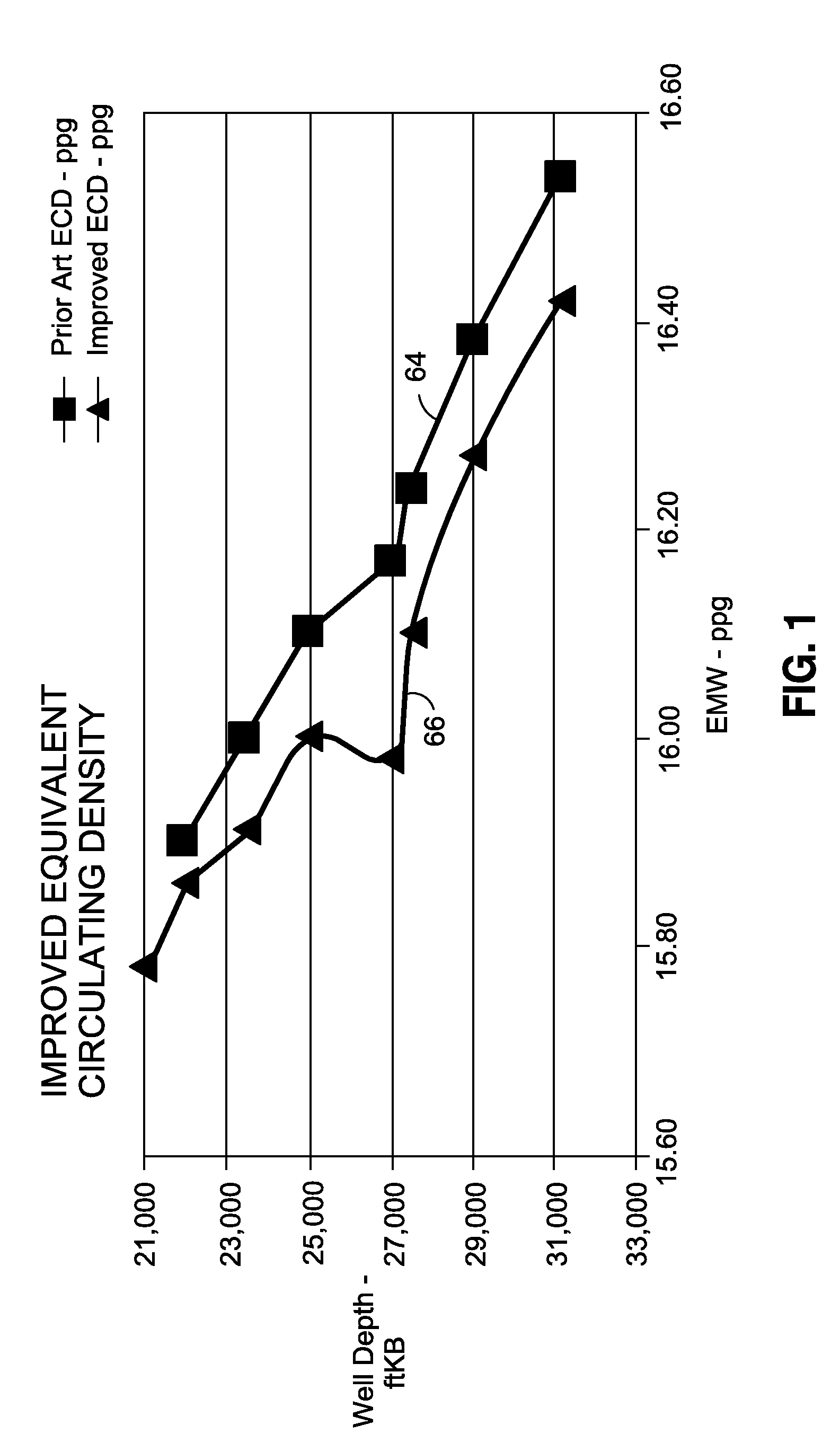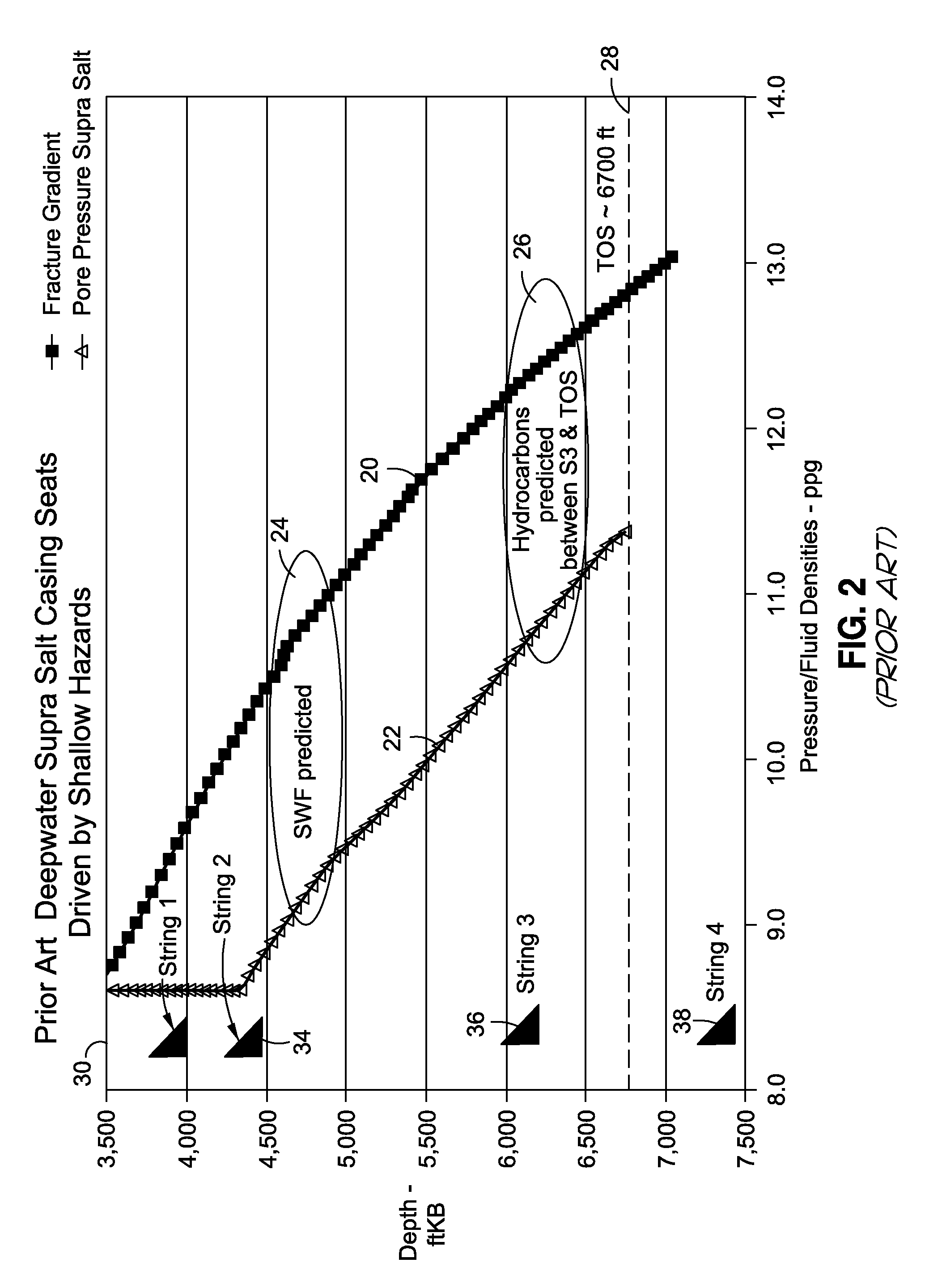Method and system for riserless casing seat optimization
a technology of casing seat and optimization method, which is applied in the direction of seismology for waterlogging, instruments, borehole/well accessories, etc., can solve the problems of not providing enough leakage tolerance, little strength or competency, and the placement of the casing seat, so as to improve the leakage tolerance, improve the effect of casing seat optimization and mitigate shallow drilling hazards
- Summary
- Abstract
- Description
- Claims
- Application Information
AI Technical Summary
Benefits of technology
Problems solved by technology
Method used
Image
Examples
Embodiment Construction
[0024]The description herein is given by way of example, and not limitation. Given the disclosure herein, one skilled in the art could devise variations that are within the scope and spirit of the invention disclosed herein, including various ways of calculating optimal depth data or casing seat placement. Further, the various features of the embodiments disclosed herein can be used alone, or in varying combinations with each other and are not intended to be limited to the specific combination described herein. Thus, the scope of the claims is not to be limited by the illustrated embodiments.
[0025]The present invention relates to a system and method for the optimum placement of drilling casing strings in deepwater drilling environments. The present invention uses a computer for processing and calculating the data necessary to optimize the placement of the casing strings as described herein. In operation, the code used to execute the data collection and computation may be preferably ...
PUM
 Login to view more
Login to view more Abstract
Description
Claims
Application Information
 Login to view more
Login to view more - R&D Engineer
- R&D Manager
- IP Professional
- Industry Leading Data Capabilities
- Powerful AI technology
- Patent DNA Extraction
Browse by: Latest US Patents, China's latest patents, Technical Efficacy Thesaurus, Application Domain, Technology Topic.
© 2024 PatSnap. All rights reserved.Legal|Privacy policy|Modern Slavery Act Transparency Statement|Sitemap



